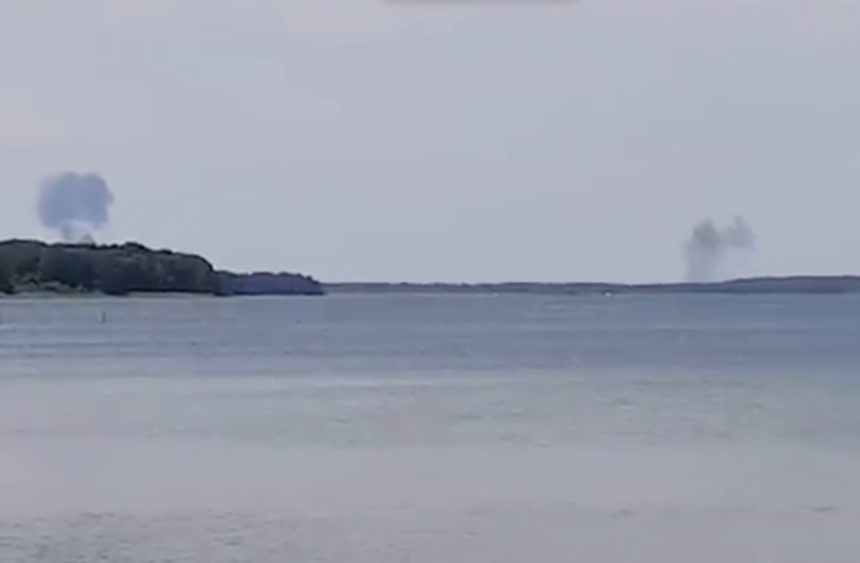Two Eurofighters have just crashed near Laage.
Luftwaffe (German Air Force) has confirmed that two GAF Typhoons crashed after colliding midair in northeastern Germany shortly before 14.00LT (12.00 GMT) on Jun. 24, 2019. Both pilots managed to eject from the aircraft even though their health status is not clear at the time of writing. (Update 15.00GMT: one pilot was recovered, one is reported as killed in the accident).
Both Eurofighters were from TLG73 “Steinhoff” squadron based in Laage and were flying an Air Combat Mission along with a third Typhoon. The pilot of the third Eurofighter observed the collision and reported two parachutes descending to the ground.
#Flugunfall. Zwei #Eurofighter nach Kollision in der Luft im Raum Laage abgestürzt. Beide Piloten konnten den Schleudersitz betätigen. #Team_Luftwaffe informiert fortlaufend.
— Team_Luftwaffe (@Team_Luftwaffe) June 24, 2019
The aircraft crashed near Lake Mueritz some 100 kilometers (62 miles) north of Berlin, according to EHA News, that also posted a video filmed just after the crash shows two plumes of smoke rising from the ground.
Two Eurofighter jets of the #German Air Force have crashed into each other at the northern Fleesensee lake near the town of Malchow in #Germany‘s Mecklenburg-Vorpommern pic.twitter.com/ThhHMQcZo6
— EHA News (@eha_news) June 24, 2019
Here’s what could be gathered by means of ADS-B/Mode-S transponders:
Hexcodes of both jets are 3F6EFA (RAVEN1) and 3F9580 (RAVEN2). Collision must have happened around 11:54:00 UTC. RAVEN1 squawked 7700 at 11:54:24 UTC. Both of their last transmitted positions are within 7 meter apart… pic.twitter.com/nlaVCdIlTJ
— Nick (@ETEJSpotter) June 24, 2019
In 2014, a Lear Jet with two people on board crashed after colliding mid-air with a German Air Force Eurofighter Typhoon over Olsberg, in Germany. The “Lear” was a target plane operated by the “Gesellschaft für Flugzieldarstellung” (GFD), a civilian company cooperating with the German Air Force for air targeting exercises, while the Eurofighter was part of flight of two Typhoons involved in a Quick Reaction Alert (QRA) training mission, in which the Eurofighters intercepted the Learjet. The military jet safely landed at Nörvenich air base whereas the private owned plane crashed in an unpopulated area, killing both pilots on board.
This is what I wrote about midair collisions between fighter jets some years ago, responding to the questions of readers who wanted to know how two F-16s might collide:
There is always the risk of a midair collision when two (or more) aircraft fly close to each other. Even if some collisions in the past took place because of failures or during engaments, air-to-air combat maneuvering, many (more) have occurred as perfectly working aircraft were rejoining the formation.
That phase of the flight can be extremely dangerous, especially at night: the two pilots, flying in a tactical spread formation, have to tighten the formation. The lead aircraft is reached by the wingman, with the latter initially forced to keep a higher speed (otherwise it would not reach the leader) and then to suddenly reduce his speed to match the leading plane’s airspeed. A distraction can be fatal.
And don’t forget how close the aircraft fly from the moment until landing: once again, a sudden move, a distraction, hence a human error could cause the midair.









